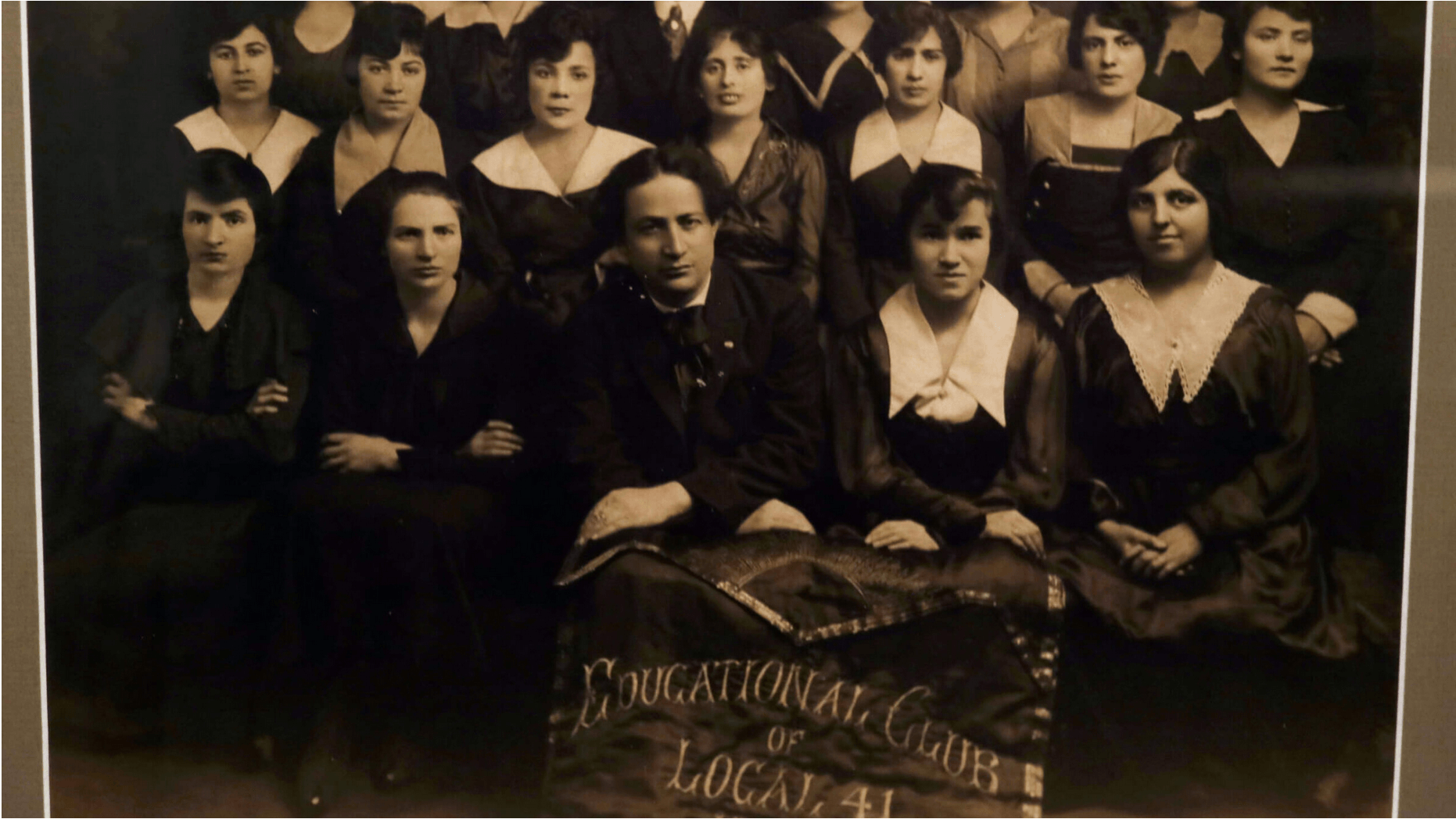The dresses my aunt sewed for us, following in Bubbe’s footsteps
Two women in Jennifer Stern’s family were garment workers, like many Jewish immigrants and immigrants’ children at that time.

Jennifer Stern’s grandmother (sitting, far right) with other members of her branch of the International Ladies Garment Workers Union, 1915 Courtesy of the Stern Family
On the wall of my bedroom hangs a large, sepia-toned photograph of a group of women and a handful of men. They pose rather stiffly and without smiling, as is often true of photographs of this period. On the banner in the foreground are the words “Educational Club of Local 41 ILGWU.”
In the first row on the right is my grandmother Fanny, my mother’s mother, who emigrated from Vitebsk, in what is now Belarus, in 1913 at age 17. After settling in New York she worked in a garment factory, just like many other newly arrived Jewish women. I love this photograph, and I’m proud that my family played a role in the garment industry.
I suddenly remembered that somewhere in our house was a photo of me as a child wearing a pink dress made by someone on my mother’s side of the family. Fortunately, I live with my parents, so I asked my mother. She rummaged through a box of photographs that we have been meaning to sort out for ages, and soon came up with the picture of a beaming little girl — barely recognizable as me — in a pink flowered dress. She then told me that it was her sister Pauline who had sewed the dress.
Pauline, who was born in 1922, died of cancer in 1989, when I was 20. I didn’t know her well because she lived for many years in North Carolina. My mother told me that Pauline finished high school in 1939 and found a job in a garment shop in Queens, where she worked at a sewing machine just like her mother Fanny had done 25 years earlier in Manhattan. Pauline made me the pink dress in June 1973 for a family wedding, and I also wore it on my fourth birthday in August. Looking now at a picture of myself in a dress made by a garment-shop worker, who was also the daughter of an ILGWU member, was genuinely moving.
As my mother and I admired the dress in the photo, she mentioned that Pauline also made her — that is, my mother’s — wedding dress. This was a total surprise: I’ve loved looking at my mother’s wedding photos for years, but never knew that her own sister had sewed it! We took out her bridal pictures and marveled at Pauline’s handiwork. At this point my father, who had come over to us when he saw the wedding photos, chimed in: “Jennifer, you know that the wedding dress is in our basement, right?”
Amazingly, this was the first time I’d ever heard about this. My father went down to the basement and returned with a plastic bag that had probably not been opened for decades. Inside was the dress, or, more accurately — part of the outfit. My mother suddenly remembered that she had once lent a friend the jacket with lace sleeves and collar that can be seen in the photographs but the friend never returned it. So here in my hands was the sleeveless underdress , with a lovely elegant skirt and sequins. My aunt Pauline’s work! It was crumpled and a bit stained, with the odd smell of old silk — but in good condition.
I put it on: it was too small (my mother was 20 years old on her wedding day, and I’m over 50), but not extremely so. Wearing my aunt’s dress, I felt a direct connection to her, to my grandmother and to the world of that sepia-tinted photograph. It seemed like my grandmother Fanny — who died when I was only 2-1/2 — was truly nearby. For the first time I understood with my fingers, with my skin, that the Jewish garment industry was an intrinsic part of my family heritage. I took off the dress and gingerly folded it .
After placing the dress in a clean bag in the closet, along with the photo from my fourth birthday party and a photograph of my parents on their wedding day, I thought about my grandmother again. I know that she was an atheist who probably didn’t believe in heaven, but I still hope that she got to see what we did this afternoon, and that it gave her naches, wherever she may be!
A message from our CEO & publisher Rachel Fishman Feddersen
I hope you appreciated this article. Before you go, I’d like to ask you to please support the Forward’s award-winning, nonprofit journalism during this critical time.
At a time when other newsrooms are closing or cutting back, the Forward has removed its paywall and invested additional resources to report on the ground from Israel and around the U.S. on the impact of the war, rising antisemitism and polarized discourse.
Readers like you make it all possible. Support our work by becoming a Forward Member and connect with our journalism and your community.
— Rachel Fishman Feddersen, Publisher and CEO